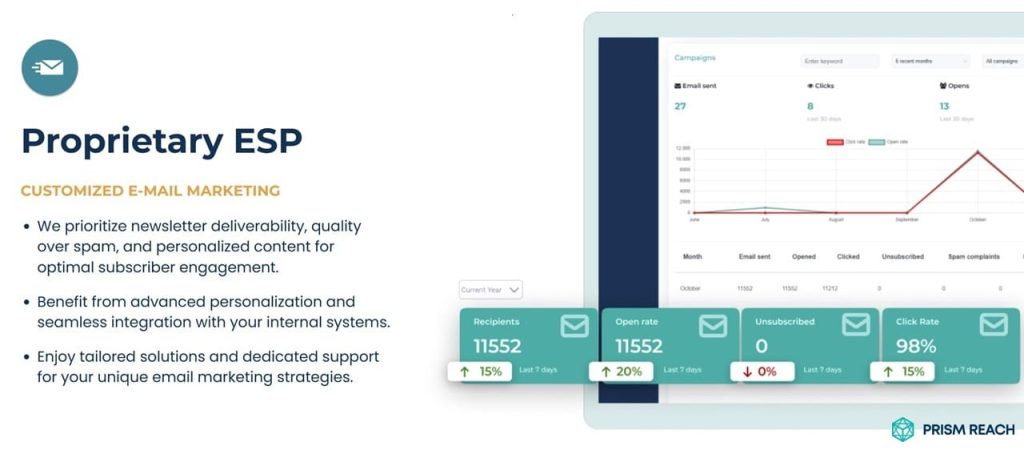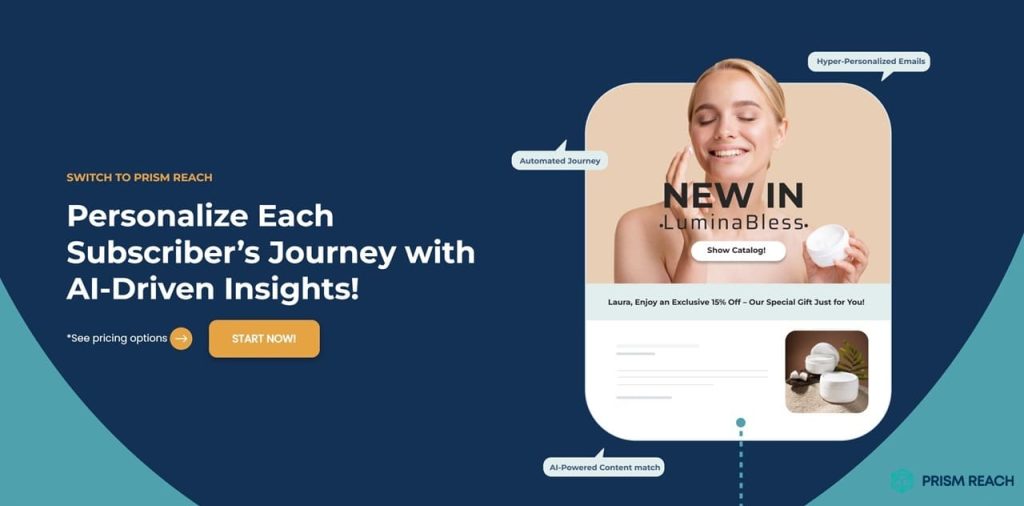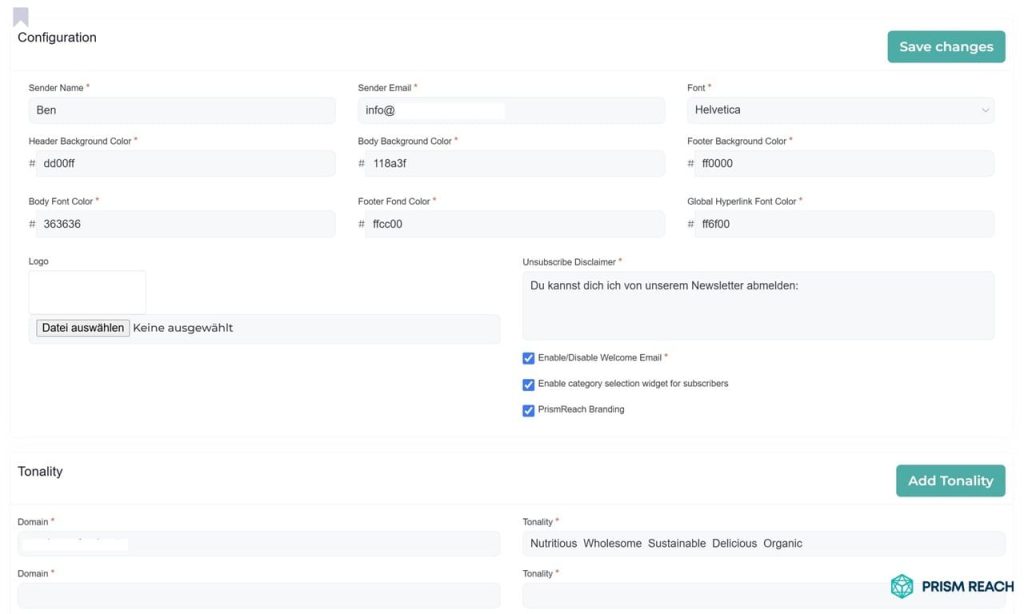In the ever-evolving landscape of digital marketing, email campaigns remain a cornerstone of effective communication with customers. However, with inboxes becoming increasingly crowded, the challenge lies not just in reaching your audience, but in truly engaging them. As businesses strive to optimize their email marketing efforts, understanding how to accurately measure performance is more crucial than ever. This metric serves as a fundamental indicator of campaign success, offering insights into audience engagement and the effectiveness of your marketing strategies.
Recent advancements in personalization and AI-driven analytics have transformed the way marketers evaluate email performance. With the average professional receiving over 120 emails per day, marketers must employ sophisticated techniques to ensure their messages not only reach but resonate with their intended recipients. This article explores innovative strategies that go beyond traditional metrics, providing a comprehensive approach to measuring email marketing effectiveness.
Key Facts
- The email open rate is calculated by dividing the number of unique opens by the number of delivered emails and multiplying by 100.
- According to recent industry reports, the average email open rate across all sectors is approximately 21.33%.
- Improving email open rates by just 5% can lead to a significant increase in click-through rates and conversions, potentially boosting overall campaign ROI by up to 25%.

Mastering Email Marketing Measurement: Strategies for 2024 and Beyond
Accurately measuring email marketing performance involves a blend of traditional metrics and innovative strategies. Here are ten lesser-known but highly effective strategies that focus on enhancing accuracy and improving engagement:
1. Utilize Engagement Scoring
Implement an engagement scoring system that assigns points based on subscriber interactions such as opens, clicks, and conversions. This system allows you to segment your audience based on engagement levels and tailor your strategies accordingly.
- Benefits:
- Provides a nuanced understanding of subscriber engagement.
- Enables targeted marketing efforts based on engagement levels.
- Helps identify high-value subscribers for personalized campaigns.
- Implementation Tips:
- Define clear criteria for scoring different types of engagement.
- Regularly update scores based on ongoing interactions.
- Use scores to create dynamic segments for more effective targeting.
2. Track “Active on Site” Metrics
Go beyond basic email metrics by monitoring how recipients behave on your website after clicking through from an email. Metrics such as time spent on the site, pages viewed, and items added to the cart provide deeper insights into user interest and intent.
- Benefits:
- Offers a comprehensive view of the customer journey.
- Identifies the effectiveness of email content in driving website engagement.
- Helps optimize website experience based on email-driven traffic.
- Implementation Tips:
- Integrate email marketing tools with website analytics platforms.
- Set up tracking parameters for links within your emails.
- Analyze post-click behavior to refine email content and targeting.
3. Monitor Email Sharing Rates
Measure how often your emails are shared or forwarded by recipients. This metric can indicate content value and virality potential, helping you understand what resonates with your audience.
- Benefits:
- Reveals the shareability and appeal of your email content.
- Helps expand your reach through organic sharing.
- Identifies content types that encourage recipients to share.
- Implementation Tips:
- Include social sharing buttons in your emails.
- Track the number of shares and forwards using analytics tools.
- Encourage sharing by offering incentives or highlighting share-worthy content.
4. Incorporate Heatmaps
Use heatmaps to visualize where users click within your emails. This insight can reveal which elements attract attention and which may need redesigning to improve engagement.
- Benefits:
- Provides visual data on subscriber interaction with email content.
- Helps optimize email layout and design based on click patterns.
- Identifies high-performing and underperforming elements within emails.
- Implementation Tips:
- Use email analytics tools that offer heatmap functionality.
- Analyze heatmaps to understand subscriber behavior.
- Refine email design based on heatmap insights to enhance engagement.
5. Leverage AI for Predictive Analytics
Utilize AI-powered tools to analyze past campaign performance and predict future engagement trends. These tools can optimize sending times, subject lines, and content based on historical data.
- Benefits:
- Provides data-driven predictions to enhance campaign effectiveness.
- Helps identify optimal times and content for sending emails.
- Increases engagement by anticipating subscriber preferences and behaviors.
- Implementation Tips:
- Integrate AI-powered analytics tools with your email marketing platform.
- Analyze historical data to train predictive models.
- Apply AI insights to refine and optimize your email campaigns continuously.

Hidden Gem Strategies
In addition to the foundational strategies, incorporating these five hidden gem strategies can further enhance your email marketing measurement efforts, making them more organized, effective, and aligned with your overall marketing goals:
1. Use Cohort Analysis
Track specific groups of subscribers over time to see how their engagement changes based on different campaigns or strategies. This analysis helps identify trends and the effectiveness of various approaches tailored to different audience segments.
- Benefits:
- Identifies long-term engagement trends among different subscriber groups.
- Helps assess the impact of specific campaigns on distinct cohorts.
- Facilitates targeted adjustments to improve engagement over time.
- Implementation Tips:
- Define cohorts based on signup date, behavior, or other relevant criteria.
- Analyze engagement metrics for each cohort over set periods.
- Use insights from cohort analysis to tailor future campaigns for improved engagement.
2. Assess Customer Lifetime Value (CLV)
Measure the long-term value of customers acquired through email campaigns by tracking their spending over time. Understanding CLV can help justify email marketing investments and refine targeting strategies.
- Benefits:
- Provides a clear understanding of the long-term impact of email campaigns.
- Helps prioritize high-value subscribers for targeted marketing efforts.
- Enhances ROI calculations by linking email marketing to revenue generation.
- Implementation Tips:
- Integrate email marketing data with CRM systems to track customer purchases.
- Calculate CLV by analyzing total revenue generated from each customer over time.
- Use CLV insights to segment subscribers and tailor marketing strategies accordingly.
3. Evaluate Spam Complaint Rates
Monitor how many recipients mark your emails as spam. A high spam complaint rate can indicate issues with content relevance or frequency, prompting necessary adjustments to improve engagement.
- Benefits:
- Identifies potential issues with email content or sending practices.
- Helps maintain a positive sender reputation.
- Encourages improvements to reduce unsubscribes and spam complaints.
- Implementation Tips:
- Regularly review spam complaint rates using your email marketing platform.
- Analyze the reasons behind spam complaints by surveying or feedback forms.
- Adjust email content, frequency, and targeting strategies based on feedback to reduce complaints.

Innovative Solutions by Prism Reach
While implementing these strategies can significantly improve your email marketing measurement efforts, leveraging advanced technology can take your campaigns to the next level. This is where Prism Reach comes into play. Our AI-powered SaaS solution is designed to revolutionize your email marketing efforts by automating and optimizing many of these measurement and engagement-boosting strategies.
Key Benefits of Prism Reach:
- Enhanced Analytics and Reporting: Prism Reach offers advanced analytics features, including engagement scoring, predictive analytics, and comprehensive reporting tools that provide deeper insights into your email campaign performance.
- AI-Powered Insights: Our AI-driven tools analyze subscriber behavior and predict future engagement trends, helping you optimize your email strategies with data-driven precision.
- Integration with Other Platforms: Seamlessly integrate Prism Reach with your CRM and other marketing tools, facilitating comprehensive tracking of metrics like “active on site” and customer lifetime value.
Upgrade Your Email Marketing with AI Personalization!
1. Utilize Prism Reach’s AI-Powered Personalization
Prism Reach’s AI-driven personalization capabilities enable you to deliver highly relevant content based on subscriber behavior and preferences. By analyzing first-party data, Prism Reach ensures that each email is tailored to the individual, enhancing the user experience while maintaining privacy compliance.
2. Implement Adaptive Testing with Prism Reach
Prism Reach’s adaptive testing feature allows you to test multiple variations of your email content simultaneously. Unlike traditional A/B testing, adaptive testing automatically adjusts traffic distribution based on performance, identifying the best-performing content more efficiently. This ensures that your emails are always optimized for maximum engagement and conversion.
3. Leverage Prism Reach’s Data Security Features
With Prism Reach, data security is paramount. The platform includes advanced security measures such as encryption and regular security audits, ensuring that subscriber data is protected against breaches and unauthorized access. This commitment to data security builds trust with your audience and aligns with compliance requirements.

Conclusion
Measuring email marketing effectiveness is a multifaceted endeavor that requires a combination of traditional metrics and innovative strategies. By implementing hidden gem strategies such as engagement scoring, tracking active on site metrics, monitoring email sharing rates, incorporating heatmaps, and leveraging AI for predictive analytics, marketers can gain a comprehensive understanding of their email campaign performance.
Additionally, employing hidden gem strategies like cohort analysis, assessing customer lifetime value, evaluating spam complaint rates, analyzing unsubscribe reasons, and utilizing cross-channel integration further enhances the accuracy and depth of your email marketing measurements. These approaches provide deeper insights that go beyond surface-level metrics, enabling more informed decision-making and strategy refinement.
Leveraging advanced tools like Prism Reach can significantly amplify these measurement strategies. With features such as enhanced analytics and reporting, AI-powered insights, and seamless integration with other platforms, Prism Reach empowers marketers to optimize their email campaigns with unparalleled precision and efficiency.
Ultimately, the key to successful email marketing lies not just in tracking the right metrics, but in understanding and acting upon the insights they provide. By adopting a comprehensive and innovative approach to measuring email marketing, businesses can drive meaningful engagement, foster stronger customer relationships, and propel their online presence to new heights.